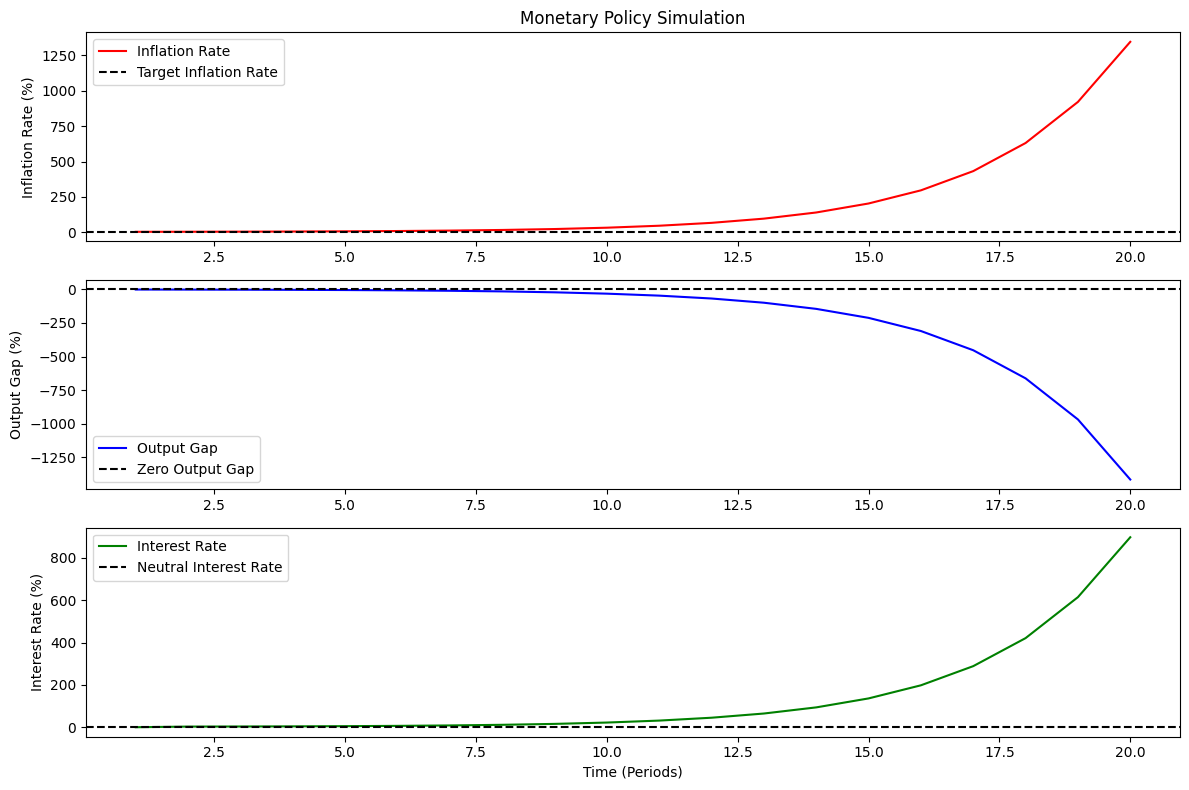We will simulate the effects of monetary policy on an economy using a simplified model.
The main variables are:
- Interest Rate (r):
Set by the central bank. - Inflation Rate (π):
Determined by economic conditions and influenced by monetary policy. - Output Gap (Y):
The difference between actual output and potential output, affected by interest rate changes.
This simulation will follow the logic of the Taylor Rule, a common monetary policy guideline:
r=r∗+ϕπ(π−π∗)+ϕYY
- (r∗) is the neutral interest rate.
- (π∗) is the target inflation rate.
- (ϕπ)and(ϕY) are policy reaction coefficients for inflation and output gap.
Python Implementation
Below is the Python code to simulate the impact of monetary policy adjustments on inflation and the output gap over time.
1 | import numpy as np |
Explanation of the Code
- Model Setup:
- The neutral interest rate (r∗), target inflation rate (π∗), and policy reaction coefficients (ϕπ, ϕY) are defined.
- Simulation Loop:
- The interest rate is updated using the Taylor Rule.
- The output gap and inflation rate are updated based on the interest rate, reflecting the dynamics of monetary policy.
- Visualization:
- The results for inflation, output gap, and interest rate over time are plotted.
Expected Results
- Inflation Rate:
Gradually converges toward the target rate (π∗=2%). - Output Gap:
Oscillates and eventually stabilizes around zero. - Interest Rate:
Adjusts dynamically based on the Taylor Rule to stabilize inflation and output.
The graphs will visually illustrate these dynamics, helping to understand how monetary policy impacts an economy over time.
